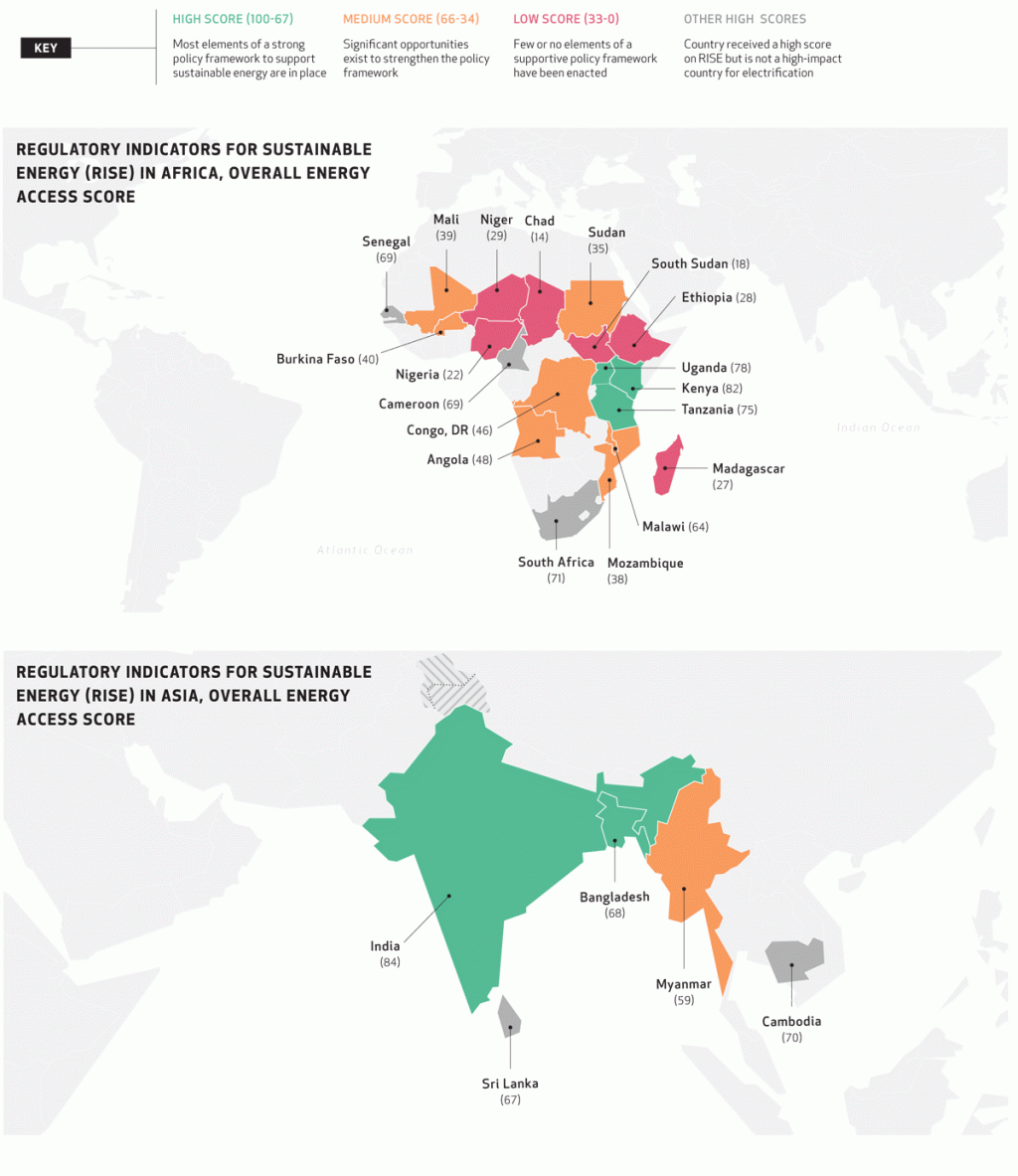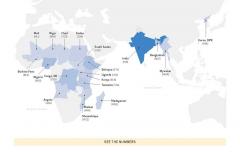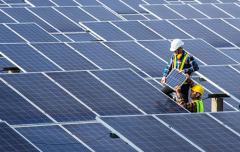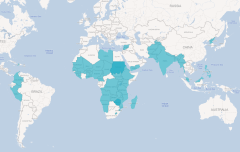Electrification: RISE Regulatory Environment

Quick Facts
Context
- Regulatory Indicators for Sustainable Energy (RISE) offers policy makers and investors detailed country-level insights on the policy and regulatory environment for sustainable energy across 111 countries globally.
- A number of countries in Sub-Saharan Africa and the Asia Pacific region received a high score for energy access on RISE but are not high-impact countries for electrification.
- RISE shows that policy frameworks for access are lagging behind, especially in populous countries of Sub-Saharan Africa and those with particularly low electrification rates.
- The top RISE scorers in energy access do well across all three possible energy supply solutions— grids, mini-grids, and stand-alone systems— suggesting they are being pursued not as substitutes but as complements. Countries in South Asia—specifically India and Bangladesh—are emerging as leaders in the access agenda with an innovative mix of grid and off-grid solutions.
NOTES: 1. Regulatory Indicators for Sustainable Energy (RISE) is a suite of indicators that assesses the legal and regulatory environment for investment in sustainable energy.
2. Korea, DPR is a high-impact country but it is not shown because there is no RISE data available.
3. The dotted line represents approximately the Line of Control in Jammu and Kashmir by India and Pakistan. The final status of Jammu and Kashmir has not yet been agreed upon by the parties.
4. These maps were produced by SEforALL. They are based on the UN Map of the World, which can be found here: http://www.un.org/Depts/Cartographic/map/profile/world.pdf. The boundaries, colors, denominations and any other information shown on these maps do not imply, on the part of SEforALL, any judgment on the legal status of any territory or any endorsement or acceptance of such boundaries.
SOURCE: Regulatory Indicators for Sustainable Energy (RISE), World Bank Group, 2017. Data extracted from http://rise.esmap.org/ on 06/23/2017.




